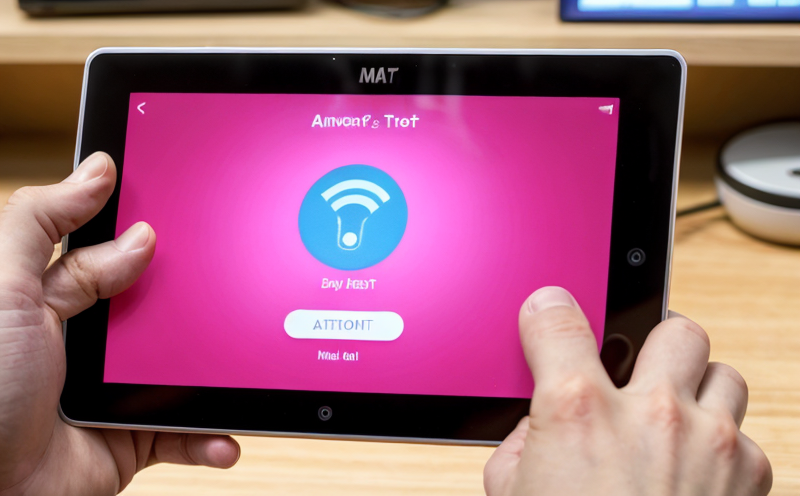Ergonomics Testing in IoT Consumer Products
As consumer electronics and smart devices become more integrated into our daily lives, ensuring that these products are ergonomically designed is crucial for the well-being of users. Ergonomic testing plays a vital role in this process by assessing how various physical characteristics of an IoT device affect its user experience.
The focus areas include comfort, ease of use, and safety during prolonged interaction with the product. Testing ergonomics involves evaluating factors such as button placement, display angles, grip design, size, weight, and overall fit for different users based on age, gender, or physical ability.
For instance, when designing a smart thermostat, ergonomic considerations would ensure that the device is easy to install and operate without requiring excessive bending or stretching. Similarly, in wearable devices like smartwatches, ergonomics ensures that the watch fits comfortably around the wrist and remains functional throughout extended periods of wear.
Testing methodologies for ergonomics often involve a combination of physical measurements using specialized tools and user surveys to gather qualitative feedback from diverse populations. This approach helps manufacturers identify potential issues early in the design process, allowing them to make necessary adjustments before product launch.
In addition to standard testing procedures, companies may adopt ISO standards such as ISO 9241-301 for usability engineering and ergonomic requirements for office workstations when applicable. These guidelines provide a framework for ensuring that products meet specific ergonomic criteria.
For connected home devices like smart speakers or door locks, ergonomics testing ensures they are accessible and safe even in environments where vision is limited due to darkness. For instance, voice command interfaces should be intuitive enough so users can operate them without difficulty if their hands are occupied with other tasks.
- Verification of physical dimensions against human body measurements
- Evaluation of grip and handle design for ease of use
- Testing for visibility and readability under various lighting conditions
- Assessment of sound output quality and volume control settings to avoid discomfort during prolonged usage
Quality and Reliability Assurance
Incorporating ergonomic testing into the overall quality assurance framework ensures that IoT consumer devices not only function correctly but also provide a comfortable user experience. This aligns with broader goals of reliability, durability, and safety.
The process begins by setting clear objectives based on market research and customer expectations regarding comfort levels during typical usage scenarios. Once defined, these targets guide every stage from initial concept through final inspection.
During development stages, prototypes undergo rigorous evaluation focusing on both quantitative metrics like error rates or response times as well as qualitative assessments related to user satisfaction scores. By continuously iterating based on feedback received during these evaluations, developers can refine their designs iteratively until they achieve optimal results.
Once the product reaches mass production levels, ongoing monitoring continues via field trials involving real-world users under controlled conditions. This helps identify any unforeseen challenges post-launch which could impact user satisfaction negatively if left unaddressed early enough in the lifecycle.
International Acceptance and Recognition
IoT consumer products must comply with international standards to ensure they are accepted globally. Many countries have specific regulations governing ergonomic aspects of electronic devices.
- ISO/IEC 9241-301: Ergonomics of human-system interaction – Part 301: Usability engineering and evaluation for office information technology (OIT) systems
- EN 386: Safety of machinery – Design principles related to the ergonomics of control systems
Compliance with these standards demonstrates a commitment to producing safe, user-friendly products that meet global expectations. It also enhances brand reputation and market access opportunities.
Besides adhering to technical specifications outlined in relevant documents, manufacturers should consider cultural differences when designing ergonomic features for international markets. What may be considered standard in one region might differ significantly elsewhere. Therefore, conducting localized usability tests can help tailor products better suited to local preferences while maintaining high standards of quality.





